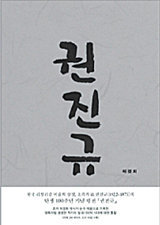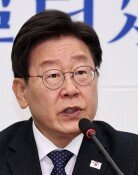About a sculptor who weathers thick and deep solitude
About a sculptor who weathers thick and deep solitude
Posted March. 26, 2022 07:26,
Updated March. 26, 2022 07:26

Here is a must-visit place on every trip made to Dongseon-dong, Seongbuk District, mid-northern Seoul. With a gross floor area of 37.75m², this adequate-sized space is filled with a profound scent of solitude – an atelier by South Korean modern sculptor Kwon Jin-kyu (1922-1973). Spending 14 years at his atelier from 1959 until he died, the artist produced various works including “Self-Portrait” (1967). He is dubbed a “genius sculptor” for dazzling beholders powerfully and delivering emotions and feelings vividly.
“There are some people out there who stand out in terms of brilliance, genius, acuteness and ghastly cleverness,” the author says in this book. “He did not come across as one of the sparkling gifted. However, I felt the thickness and depth of Kwon’s soul.”
The author, the second son of Kwon’s elder sister named Kwon Kyung-sook, has collected and studied his uncle’s arts since the foundation of a commemorative group for the artist in 2008.
The main focus of the author’s narrative is on Kwon Jin-kyu as a man per se. He describes Kwon’s heart-breaking love story with his former wife Domo Ogino. Studying at the Department of Sculpture at Musashino Art University, he dated with Domo for eight years to marry her. Back in 1959 before South Korea and Japan normalized their diplomatic relations, Kwon came back to his home country leaving his wife alone in Japan. Five years later, he signed the divorce papers sent by his father-in-law. Afterwards, the divorced couple met only once in his individual exhibition held in Tokyo in 1968. The author guesses what the artist might have thought of by analyzing “Domo” (1957), “Reunion” (1967), etc.
Even with the area of abstract sculpture in the mainstream, Kwon stubbornly pursued representational sculpture. His consistent pursuit of new things in his career is shown in many works such as “The Face of the Support” (1967) and “The Christ on the Cross” (1970) – characterized by terracotta and the method of using lacquered hemp cloth. Nevertheless, he did not sell well but also got along with only a few acquaintances. The last traces of Kwon’s life allow us to imagine the degree of solitude that he might have felt deep in his heart. Dropping by Korea University Museum on May 3, 1973, he made silent eye contact with three entry pieces of his and committed himself at his atelier next day.
In celebration of the 100th anniversary of Kwon who walked a path of loneliness throughout his lifetime, his works are becoming widely appreciated, albeit belatedly. “Kwon Jin Kyu Centennial – Angel of Atelier” is available at the Seoul Museum of Art (Seosomun Main Building) by May 22. The word atelier in the title signifies an art studio equipped with a kiln for art or this special-type oven per se.
beborn@donga.com







